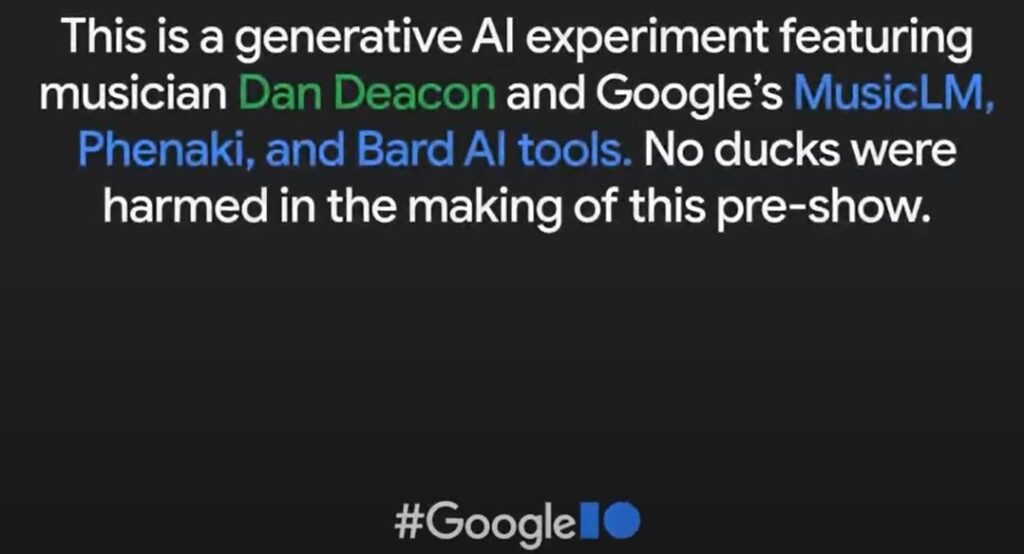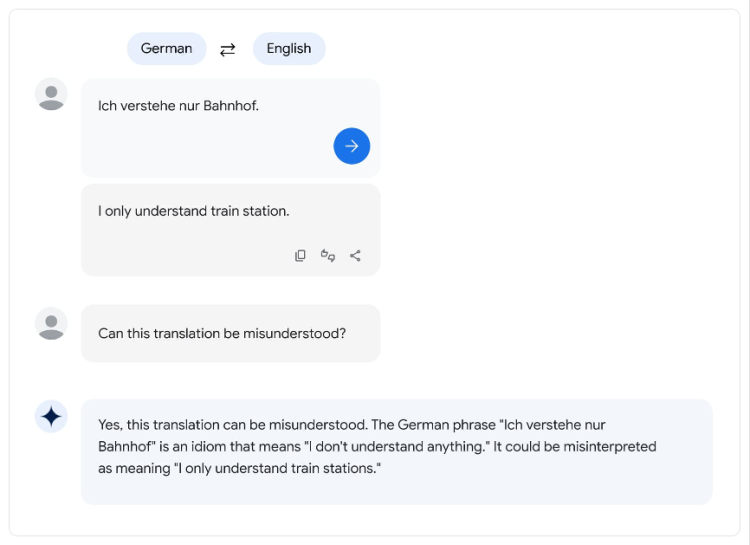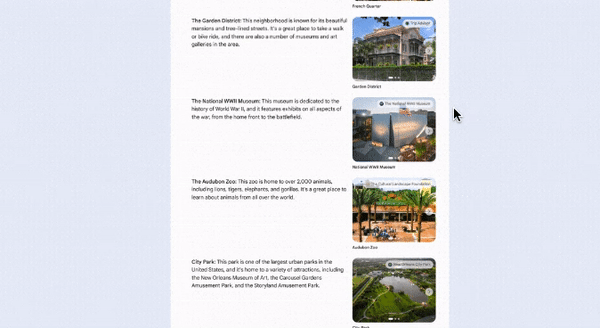At the Shoreline Amphitheatre, just a street away from Google’s Silicon Valley headquarters, developers and media attendees gathered early for this year’s Google IO event. Unlike the previous two years, which were heavy on humanities and light on major product releases, Google seems to have gone all out this year. Whether it’s AI updates or new hardware products, Google IO 2023 is undoubtedly a rare technology extravaganza.
Of particular note is Google’s series of AI-powered innovations. Almost all of its products have been fully integrated with AI and upgraded significantly. Google, which had been slow to start in the current AI race, seems to have shed its reserve. As a long-time leader in the AI field, Google demonstrated its enormous AI capabilities and potential to the public at this year’s IO event.


Before the official keynote, the audience was treated to several pieces of psychedelic electronic music created by Google’s new MusicLM and Bard AI tools.
Upgrades AI for Smarter Life Experience – Gmail, Maps, and More
Their latest update to their AI technology promises to integrate seamlessly into our daily lives. In particular, AI has been integrated into software that we use every day, such as Gmail, Google Maps, and image editing.
Gmail Upgrade – “Help Me Write”

One of the most anticipated updates is the new auto-write email feature in Gmail. This feature, called “Help Me Write,” builds on the existing Smart Compose feature that was released in 2017. With “Help Me Write,” users can quickly write complete emails and replies with the assistance of AI.
At the recent IO conference, Google showcased a specific use case for this new feature. If you need to apply for a refund from an airline, you simply need to tell Gmail your intent to apply for a refund, and the AI will write a complete email based on your flight details, including adjusting the tone to suit your needs.
Google Map Upgrade – 3D immersive view
Google Maps has just introduced a groundbreaking feature that promises to revolutionize the way we navigate. With the help of AI and computer vision technology, Google has fused billions of satellite and street view images together to create detailed 3D models of spaces. This means that when you use Google Maps for directions in the future, you won’t just see a 2D route from point A to B, but rather a visual representation of the roads and surrounding buildings. You’ll even be able to view real-time weather and traffic information for the area.

Google has announced that this feature will be rolled out soon, starting with 15 cities including Amsterdam, Berlin, Dublin, Florence, and Las Vegas. With this 3D immersive view, users will have a more comprehensive understanding of their surroundings and make more informed decisions about their routes. Whether you’re a local or a tourist, this feature will be a game-changer for getting around.
Magic Editor – Easily Edit Your Photos
If you’re not a professional photo editor, the idea of editing photos might seem daunting. However, with Magic Editor, even beginners can easily enhance their pictures. Similar to Apple’s previous photo features, Magic Editor recognizes different elements in a photo and allows you to edit them by simply dragging and dropping. For example, you can move a person to the left or right to better suit your desired composition.

Magic Editor offers a user-friendly interface that is perfect for beginners. You don’t need to have any prior photo editing experience to use it. With its intelligent recognition technology, Magic Editor can identify objects in your photos and suggest improvements that can enhance the overall quality of your picture.
Whether you want to adjust the brightness or contrast of your photo or want to add some creative filters, Magic Editor can help you achieve your desired results. The drag-and-drop interface makes it easy to make changes, and the intuitive controls ensure that you get the exact look you want.
Magic Editor is a user-friendly photo editing tool that is perfect for beginners. Its intelligent recognition technology and intuitive controls make it easy to edit photos and achieve professional-looking results. Give it a try and see how it can transform your photos.
PaLM 2 – the Most Powerful Language Model Yet
Google has recently unveiled PaLM 2, the next generation language model that boasts impressive capabilities and improvements from its predecessor, PaLM. With the use of 540 billion parameters for its training, which is about three times the size of GPT-3, PaLM 2 is a massive upgrade in the language model industry.
One of PaLM 2’s notable improvements is its ability to understand and generate text in over 100 languages. Its training now covers a wider range of languages, including idioms, poetry, and riddles, making it an exceptional tool for translation and interpretation. Additionally, PaLM 2 has passed an advanced language proficiency test, indicating its ability to reason and encode information.
This advancement in language modeling will have a significant impact on various industries, particularly in the fields of artificial intelligence and machine learning. The ability to understand and interpret text across different languages can help bridge the communication gap between nations and cultures, leading to more efficient and accurate translations.

Furthermore, businesses can use PaLM 2 to enhance their customer service capabilities by providing real-time translation services. This feature will enable companies to communicate effectively with their global customers and expand their market reach.
PaLM 2 is a cutting-edge language model that has been making waves in the field of artificial intelligence. One of the key features that sets PaLM 2 apart from other language models is its exceptional ability in logical and mathematical reasoning. This is made possible by the dataset used to train PaLM 2, which includes scientific papers and web pages with mathematical expressions.

4 PaLM2 Specs for Different Device Usage
What’s worth noting is that PaLM 2 has been developed into different versions to cater to different clients and can be deployed in various enterprise environments. Currently, PaLM 2 has four specifications: Gecko, Otter, Bison, and Unicorn. The smallest one, Gecko, can run on mobile devices and process around 20 tokens per second, equivalent to about 16 or 17 words. This means that developers don’t have to spend a lot of time and resources creating and adjusting PaLM 2, but can directly use it for deployment.

Overall, PaLM 2 is a powerful tool for improving code writing efficiency and accuracy. Its ability to generate specialized code in various programming languages makes it an ideal choice for businesses and developers looking to streamline their coding processes. So, if you’re looking for a reliable language model for code writing, PaLM 2 is definitely worth considering.
Meet Bard, the Multi-talented Chatbot Powered by PaLM 2
Bard, the chatbot developed by Google, has recently received an upgrade in the form of PaLM 2, which has transformed it into a multi-talented tool that is capable of generating diverse and informative responses.
Previously based on LaMDA with 1.37 trillion parameters, Bard’s ability to generate answers has greatly improved since its integration with PaLM 2. The new model has expanded its data set and diversified its content, allowing it to generate responses that incorporate not just text, but also images, videos, and external links.
Thanks to Google’s integration with other products, Bard has transcended its original role as a chatbot and has become a practical and versatile tool that can provide users with a wealth of information.

With Bard, you can easily export the answers to your questions to various Google applications such as Gmail, Google Docs, and Google Sheets. Additionally, Bard can also help you annotate images and documents, making it a useful tool for non-developers as well.
For software engineers, Bard offers an improved code reference feature that not only provides the source but also explains code snippets. Furthermore, developers can now export the generated code from Bard, which can be sent to Google’s Colab platform or used with another browser-based IDE, Replit, which currently supports Python.
Currently, Bard supports over 20 programming languages, which should cover most of the development needs of engineers. Bard also offers a new dark mode interface for developers. With just a prompt, developers can get complete code snippets.

In addition to ChatGPT, Bard now offers integration with other external tools to enhance its capabilities. During Google IO, an example was demonstrated where Bard collaborated with Adobe Firefly to generate images. For instance, if you need to create an invitation photo for your child’s birthday party with a unicorn and a cake, all you have to do is tell Bard “Create an image with a unicorn and cake for a children’s party.” With Adobe’s support, Bard can generate four images in just a few seconds. This is a great alternative to the complex methods of Midjourney.
This integration of Bard with Adobe Firefly simplifies the process of image generation by eliminating the need for complex procedures. It provides users with an easy and efficient solution to create customized images quickly and effortlessly. This collaboration is a game-changer in the field of image generation, as it enables users to create high-quality images with just a few simple instructions.
Additionally, this integration can be used in various fields, including digital marketing, graphic design, and content creation, to enhance productivity and creativity. By leveraging the power of Bard and Adobe Firefly, users can save time and effort while producing visually stunning images that can effectively convey their message.

Integrations with Kayak, OpenTable, ZipRecruiter, and More
Bard is now accessible to everyone worldwide. Google has eliminated the waiting queue, making Bard available to users in over 180 countries and regions. Additionally, the platform now supports Japanese and Korean languages, and will gradually support up to 40 languages in the future.
Bard’s integrations with popular tools like Kayak and OpenTable are especially beneficial for frequent travelers or those in the hospitality industry. New integrations with external tools such as ZipRecruiter, Instacart, Wolfram, and Khan Academy. These integrations will allow users to translate content within these tools seamlessly.With this new feature, users can easily translate travel and reservation details without switching to a separate translation tool. Similarly, job seekers can now use ZipRecruiter without worrying about language barriers.
The addition of Japanese and Korean languages is a huge step forward for Bard. As the platform continues to expand its language support, more users will have access to seamless and accurate translations. This not only benefits individuals but also businesses operating in different regions of the world.
Google Duet AI – Compete with Microsoft Copilot
In March of this year, Microsoft made waves in the productivity tools arena with the release of Copilot. Google responded by announcing a series of AI-powered features for its Workspace application suite, aiming to keep pace with Microsoft in the competition. However, at that time, these AI features were somewhat scattered and lacked a systematic tool like Copilot.
Today, at the IO conference, Google has finally unveiled its answer to Copilot: Duet AI. This new AI tool promises to enhance the user experience by making suggestions and offering guidance in real-time. It will be integrated into various Google Workspace apps, such as Google Docs and Google Sheets, allowing users to complete their work more efficiently.
Duet AI uses machine learning algorithms to analyze the context of the user’s work and provide relevant recommendations. It can suggest phrases, words, and even entire paragraphs to complete the user’s writing. Additionally, it can also provide helpful tips for formatting, suggest relevant images, and assist with basic calculations.

One impressive application of Duet AI is its ability to generate complete articles simply by inputting a topic within a document. This saves writers significant time and effort while ensuring the generation of high-quality content. New feature called Sidekick has been introduced, allowing users to read, summarize, and answer questions across different Google applications.
Moreover, Duet AI also enables the creation of complete tables in Google Sheets by simply typing a sentence such as “Statistics of dog walking business clients and pets” – the table is automatically generated, including fields such as dog breed, address, email, date, time, duration, and cost. Users can further edit the table using natural language commands.
With the integration of Duet AI and Sidekick, Google Workspace users can significantly enhance their productivity by automating tedious tasks and streamlining workflows. These features will undoubtedly benefit businesses and individuals alike, allowing them to focus on more critical tasks and drive growth and success.


Aside from being used in productivity suites, Duet AI will also be integrated into Google’s cloud services. With Duet AI, Google has released a series of developer tools that provide real-time code assistance, identifying errors while suggesting code blocks and answering questions related to Google Cloud and code. The feature supports multiple programming languages such as Go, Java, JavaScript, Python, and SQL. According to Google, Duet AI has increased AI training speeds by 80% and decreased costs by 50%.
However, Duet AI’s functions in Google’s productivity suite are not yet available to the public. To try out these new tools, users need to register for “Workspace Labs” and join a waiting list. With Duet AI, developers can have access to improved cloud development tools that can help streamline their coding process and increase productivity.
Generative AI – A New Search Experience
As Bing continues to pose a threat to Google, the latter has recently undergone a significant AI update for its search business. Similar to Bing, Google’s search results now display a more direct answer provided by AI, along with relevant images, links, and videos beneath the search bar after a user enters a query. Based on the initial search, users can interact and perform additional queries to obtain the most relevant answer.

Shopping Graph – Search Based Shopping Experience
When you search for a product to buy on Google, you expect to find relevant product links. However, with the introduction of Google’s Shopping Graph, your search-based shopping experience is taken to a whole new level. This AI-based technology not only provides you with the links to the product you need but also offers a summary of the product you are looking to purchase, including reminders of things to look out for when buying, product features, latest reviews, and more.
The Shopping Graph is an extensive and dynamically updated database of products, sellers, brands, reviews, and inventory data, with over 350 billion product listings. This database allows you to access the most comprehensive and up-to-date product information to make informed decisions before making a purchase. It is a significant breakthrough for online shoppers as it provides a unique and personalized experience.
It’s worth noting that Google distinguishes between advertising and natural search results, ensuring that the user’s experience is not compromised by ads. With Google’s Shopping Graph, you can be confident that you’re getting the most accurate and relevant information about the products you’re interested in.

Google’s recent integration of AI-powered search features has excited users worldwide. However, the tech giant is still taking cautious steps forward in front of billions of users. Similar to Duet AI’s Workspace Labs, Google has set up a new “Search Labs” to test its latest search functionality. To access this new search feature, users must select a feature called the Search Generative Experience (SGE).
Google also emphasizes that not all searches will trigger AI-generated answers. AI-powered results will only appear when Google’s algorithm deems them more useful than standard results. Sensitive topics such as health and finance-related information will not display AI-generated answers.
While Google’s AI-powered search features have yet to become mainstream, the tech giant’s cautious approach shows its dedication to ensuring the accuracy and relevance of its search results. As Google continues to develop new search features, we can expect a more personalized and efficient search experience for users.


